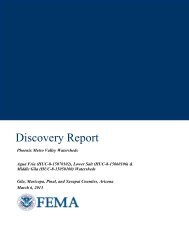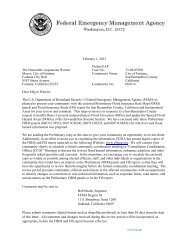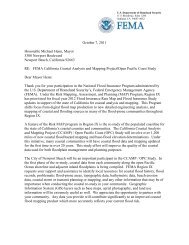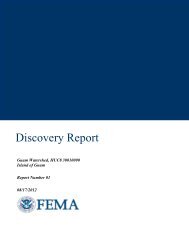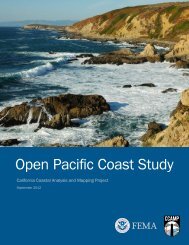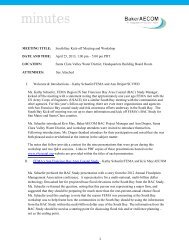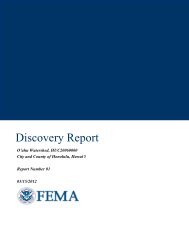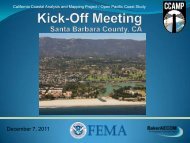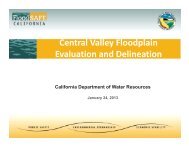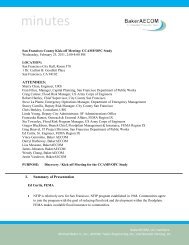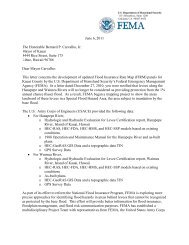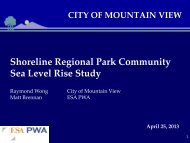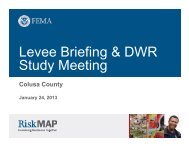YAVAPAI COUNTY, ARIZONA Federal Emergency ... - FEMA Region 9
YAVAPAI COUNTY, ARIZONA Federal Emergency ... - FEMA Region 9
YAVAPAI COUNTY, ARIZONA Federal Emergency ... - FEMA Region 9
Create successful ePaper yourself
Turn your PDF publications into a flip-book with our unique Google optimized e-Paper software.
Precipitation in the study area is produced by general winter, general summer, and<br />
local storms. General winter storms normally occur over the southwestern United<br />
States during the cooler months of November through March as extratropical<br />
cyclones move inland from the Pacific Ocean, spreading light to moderate<br />
precipitation over large areas for several days. Orographic effects are usually<br />
quite pronounced with the mountain receiving greater precipitation than the lower<br />
elevations. Much of the precipitation in the higher elevations also falls as snow<br />
during this type of storm.<br />
At times, however, warm heavy rain can fall on top of a ripe snow-pack creating<br />
conditions favorable for heavy runoff. General summer storms normally occur<br />
between July and October and may be associated with a tropical storm. These<br />
storms usually consist of general steady or intermittent rain over large areas, with<br />
moderate to heavy thunderstorms often embedded. Local storms are defined as<br />
rainstorms of high to very high intensity, occurring over small areas for short<br />
durations. They are most common during the summer months, but can occur at<br />
any time of the year (USACE, 1976). Mean annual precipitation ranges from<br />
approximately 10 inches in the desert to over 27 inches in the mountains. The<br />
mean annual snow, sleet, and hail total for the mountains ranges between 40 and<br />
50 inches. Crown King station recorded a monthly extreme of 116.1 inches in<br />
January 1941 (Sellers and Hill, 1973).<br />
Development of the floodplain varies. Most of the land along the study streams is<br />
either agricultural or undeveloped. However, many areas have mobile homes,<br />
houses and/or commercial structures as well as public utilities, roads, and bridges<br />
located in the floodplain.<br />
2.3 Principal Flood Problems<br />
Flooding occurs as a result of discharges in excess of channel capacities, and in<br />
some cases from backwater from restrictive bridges. The following descriptions<br />
contain information on the principal flooding problems and historical flooding.<br />
For the smaller drainage area streams, local storms, predominately during the late<br />
summer months, cause the most severe flooding. With the exception of Pacific<br />
Tropical Storm Norma in September 1970, major flooding in the larger basins<br />
occurs from the general winter storms with snowmelt.<br />
Flooding records date back to 1890 for the Hassayampa River and 1891 for the<br />
Verde River. Six of the detailed study streams were correlated with information<br />
obtained from the USGS stream gages.<br />
The stream name, date, discharge, and estimated recurrence interval for some of<br />
the larger peak discharges recorded are shown in Table 4, "Historic Discharges".<br />
14




